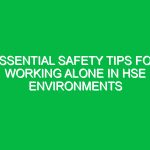Welcome Team!
Today, we’re going to conduct a toolbox talk focused on a crucial aspect of our work Environment: Overhead Power Lines. Understanding how to safely work around these lines is essential for ensuring both your Safety and the Safety of your coworkers. We’ll discuss key safety tips, potential Hazards, and Best Practices related to Overhead Power Lines. Let’s dive in!
Understanding Overhead Power Lines
Overhead Power Lines are electrical lines that are suspended above the ground, typically supported by utility poles or towers. They are a common sight in urban and rural areas, providing electricity to homes and businesses. While they are necessary for our daily lives, they also pose significant safety risks if not approached with caution.
The Importance of Safety Around Overhead Power Lines
Working near Overhead Power Lines can be hazardous. The electricity that flows through these lines can cause severe injuries or even fatalities if contact is made. It’s imperative that everyone understands the risks and adheres to safety protocols. By being informed and cautious, we can prevent accidents and foster a safer work environment.
Key Hazards Associated with Overhead Power Lines
Before we discuss Safety Measures, let’s identify the primary hazards:
- Electrical Shock: Coming into contact with live wires can result in serious injuries or death.
- Circuit Overload: When equipment comes too close to Overhead Power Lines, it can cause shorts and overloads.
- Falling Objects: Tools or equipment can fall from heights if they come too close to overhead lines.
- Inadequate Clearances: Failing to maintain proper distance from power lines can lead to accidents.
Best Practices for Working Near Overhead Power Lines
Now that we understand the hazards, let’s discuss the Best Practices to keep you safe:
1. Identify the Location of Overhead Power Lines
Before starting any job, take a moment to survey your work area. Identify where Overhead Power Lines are located and mark them clearly. This will help you maintain awareness throughout the duration of the task.
2. Maintain Safe Distances
Always adhere to the minimum clearance distances from Overhead Power Lines. The Occupational Safety and Health Administration (OSHA) recommends maintaining at least a 10-foot distance from energized lines. This distance may increase depending on the voltage of the lines, so ensure you know the specific requirements for your area.
3. Use Proper Tools and Equipment
When working near Overhead Power Lines, it’s important to use non-conductive tools and equipment. Insulated tools can help reduce the risk of electrical shock. Additionally, if you are using ladders or scaffolding, ensure they are non-conductive and rated for electrical work.
4. Implement Safety Barriers
Whenever possible, use safety barriers to restrict access to areas near Overhead Power Lines. This can help prevent accidental contact by workers or equipment. Use cones, tape, or signs to clearly mark these boundaries.
5. Train Employees Regularly
Regular Training sessions can help reinforce the importance of safety around Overhead Power Lines. Conduct drills and refresher courses to ensure everyone is aware of the hazards and knows how to respond in case of an emergency.
6. Keep a Close Eye on Weather Conditions
Weather can significantly impact the safety of working near Overhead Power Lines. High winds, rain, or storms can create dangerous conditions. If there’s severe weather, consider postponing work that involves these lines.
7. Report Hazards Immediately
If you notice any damaged or sagging Overhead Power Lines, report them to your supervisor immediately. Do not attempt to fix the lines yourself. Always prioritize safety and rely on trained professionals to address these issues.
Real-Life Example: The Importance of Awareness
Let’s consider a hypothetical scenario. Imagine you’re working on a construction site where heavy machinery is being used. One of your colleagues is operating a crane that inadvertently swings too close to an Overhead Power Line. The operator was unaware of the power line’s presence, leading to a near-miss incident. Fortunately, no one was injured, but this situation serves as a reminder of the importance of being aware of our surroundings. Always maintain vigilance and communicate with your team about potential hazards.
Regulations and Compliance
It’s crucial to understand that safety around Overhead Power Lines isn’t just about best practices; it’s also about compliance with Regulations. osha has specific Standards that govern work near power lines. Familiarize yourself with these regulations, as they are designed to protect not just you but also your coworkers and the public. Failure to comply can result in legal repercussions for both you and the company.
Emergency Procedures
In the event of an accident involving Overhead Power Lines, it’s essential to know the emergency procedures:
- Stay Calm: Panic can worsen the situation. Stay focused and take immediate action.
- Call for Help: Notify emergency services and your supervisor about the incident.
- Do Not Approach: If someone is in contact with live lines, do not approach them. Instead, call for trained professionals to handle the situation.
- First Aid: If you are trained, provide first aid to anyone who may need it, but only if it is safe to do so.
Engaging in Discussion
Before we wrap up, let’s take a moment to discuss. Are there any experiences you’d like to share regarding working near Overhead Power Lines? Have you ever encountered a situation that required you to apply safety protocols? Sharing these experiences can help reinforce our collective knowledge and improve our safety practices.
Conclusion
As we conclude this toolbox talk, let’s remember that safety around Overhead Power Lines is not just a set of rules but a commitment to ourselves and our coworkers. By following the best practices we discussed today, we can minimize the risks and ensure a safe working environment. Thank you for your attention and for your dedication to safety. Let’s keep our workplace secure!


